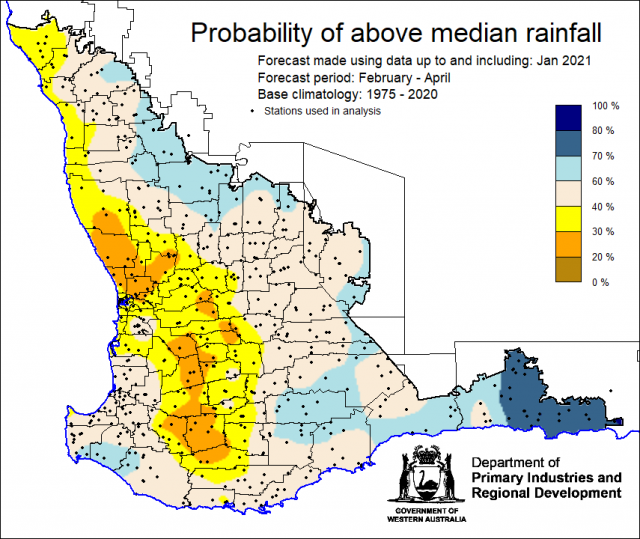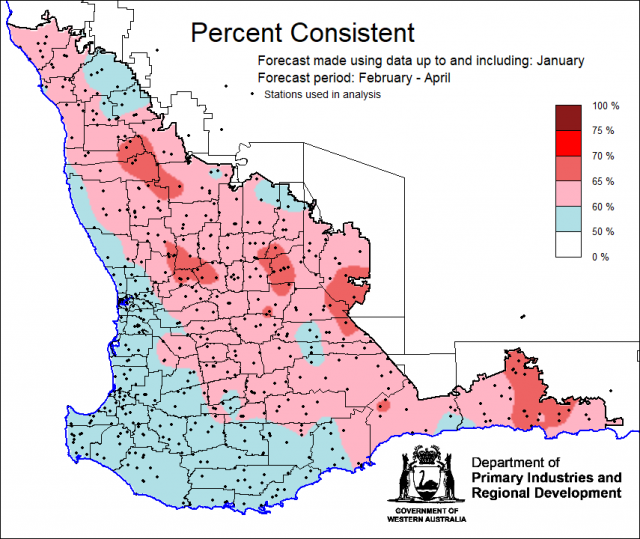Summary
The Department of Primary Industries and Regional Development’s (DPIRD) Statistical Seasonal Forecast (SSF) outlook for February to April 2021 is indicating greater than 40% chance of exceeding median rainfall for the eastern parts of the South West Land Division.
- For February to April 2021, the SSF is indicating greater than 60% chance of exceeding median rainfall for the eastern part of the Central West, parts of the Great Southern and South East Coastal forecast Districts of the South West Land Division (SWLD). Less than 60% chance elsewhere. The most probable rainfall decile map indicates decile 8-10 for eastern parts and South East Coastal forecast District in the SWLD and decile 2-7 elsewhere. Predictive skill based on January conditions is mostly poor to moderate (50-70% consistent).
- The Bureau of Meteorology’s seasonal outlook for February to April 2021 indicated 45-70% of exceeding median rainfall for the SWLD, with the higher chances for the South Coastal and South East Coastal forecast Districts. Predictive skill is poor to good (45-75% consistent). The autumn outlook, March to May has similar chances with predictive skill poor to moderate (45-65%).
- Temperature outlooks for February to April 2021, from the Bureau indicate a 60-80% chance of above average day-time maxima along the coast, with lower chances (40-60%) for interior (skill 45-65%) and 70-80% chance of above average night-time minima (skill 55-75%) for the SWLD.
- January rainfall was generally average for the South West Land Division. In January the western coast of the SWLD saw above average maximum and minimum temperatures, but the Southeast Coastal forecast district had below average maximum temperatures.
- Warmer than normal Sea Surface Temperatures off the Western Australian coast, together with a positive SAM are currently the main climate drivers influencing SWLD climate. Warmer SSTs are likely to be contributing to above-average rainfall. A positive SAM means westerly winds are further south than normal and this may increase temperatures in the SWLD.
Three Month Outlook for the South West Land Division
Statistical Seasonal Forecasting (SSF)
DPIRD’s Statistical Seasonal Forecast (SSF) system uses historical relationships between global sea surface temperature and sea level pressure with rainfall in south-west Australia to produce forecasts of rainfall for the coming months. Users can click on any station indicated on the map for location-specific forecast information from the Seasonal Climate Information web page.
For February to April 2021, the SSF is indicating greater than 60% chance of exceeding median rainfall for the eastern part of the Central West, parts of the Great Southern and South East Coastal forecast Districts of the South West Land Division (SWLD). Less than 60% chance elsewhere. The most probable rainfall decile map indicates decile 8-10 for eastern parts and South East Coastal forecast District in the SWLD and decile 2-7 elsewhere. Predictive skill based on January conditions is mostly poor to moderate (50-70% consistent).


